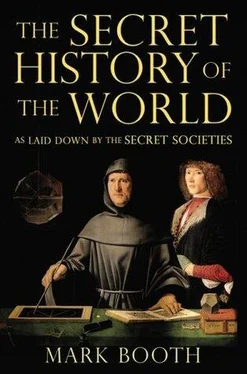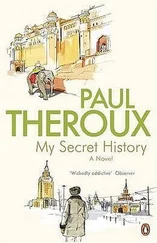Anthropologists have noticed that accounts of shamanistic experience across many different cultures show a progression through the same stages.
First, a blacking out of the world of the senses, and a sense of a journey through the darkness. Great pain is often experienced as if the body is being dismembered.
Second, a sea of lights, often with a shifting net of geometric patterns — the matrix.
Third, these patterns morph into shapes, most commonly snakes and half-human, half-animal creatures often with pliable, semi-transparent bodies.
Lastly, when the trance fades the shaman has a sense of enjoying supernatural powers, the ability to heal, information about enemies, mind-to-mind influence on animals and the gift of prophecy.
This may all seem to fit nicely with the accounts of initiations in Mystery schools that we have looked at. Gregg Jacobs at Harvard Medical School has said that ‘by the use of shamanistic techniques we can work ourselves into powerful ancestral states of consciousness’.
But in the view of modern esotericists, the example of shamanism will only take us so far when trying to understand the Mystery schools and secret societies. Many of the paintings produced by shamanistic cultures as records of their trances are startlingly beautiful, but they do not give the same magnificent, comprehensive panorama of the spirit worlds found, for example, on the ceilings of the temples of Edfu or Philae. Moreover, the beings encountered by shamans seem to be from the lower levels, rather than the more elevated planetary gods with whom the temple priests communed.
In the view of modern esoteric teachers, then, all shamanism, whether that of the old Hunnic or Mongol hordes or that practised by the sangoma in South Africa today, represent a degeneration of a once magnificent primordial vision.
Again we see that in the secret history everything is upside down and the wrong way round. In conventional history religion’s early stages were marked by animism and totemism, then developed into the complicated cosmologies of the great ancient civilizations. In the secret history humankind’s primordial vision was complicated, sophisticated and magnificent, and only later degenerated into animism, totemism and shamanism.
Attila’s tribespeople practised a shamanism that gave them an access to the spirit worlds that many a churchman might envy, but it was access in an atavistic state. It ran contrary to the impulse of the evolution of human consciousness that had been developed by Pythagoras and Plato and had now been given new direction by Jesus Christ and Paul. The aim of this evolution was a beautiful one — that people would be able take joy in their individual intellectual strength and superiority, and that they should be able to choose to move freely, powerfully and lovingly not only through the material world but also through the spirit worlds.
Drug-taking is, of course, a big part of modern shamanistic practice, but it is forbidden by most modern esoteric teachers as a means of reaching the spirit worlds. The aim of these teachers is to achieve experience of the spirit worlds with intelligence and critical faculties as unimpaired as possible, indeed heightened. To enter the spirit worlds on drugs, on the other hand, is to do so without proper preparation, and may open up a portal into a demonic dimension which then refuses to close.
WHEN IN 453 ATTILA PREPARED TO CELEBRATE MARRIAGE to a high-born, soft-skinned young woman — he already had hundreds of wives — he was a man in the prime of life and full of potency, about to oversee the end of the Roman Empire.
The delicate early growth of a new stage of human consciousness was about to be nipped in the bud.
In the morning Attila was found dead. He had suffered a massive nosebleed.
‘I BELIEVE BECAUSE IT IS ABSURD.’ This famous phrase by the first of the Latin-speaking Church fathers, Tertullian, influenced many thinkers in the late nineteenth and the first half of the twentieth century.
We may imagine how absurd life might have seemed to a citizen of the Roman Empire in the days of its decline. He lived in a disenchanted world, where the great spiritual certainties on which the civilizations of the ancient world had been founded seemed doubtful. They no longer corresponded to his experience. Pan was long dead and the oracles had fallen silent. God and the gods seemed little more than empty, abstract ideas, while the really vigorous thought-life was in the realm of science and technology, in the atomic theories of Lucretius, in amazing engineering projects — aqueducts, drainage systems and roads thousands of miles long — that were springing up all round. Spiritual certainties had been replaced by harsh political and economic realities.
Yet if this citizen had been minded to listen to the inner promptings of his spirit, he might have noticed that this harsh and mechanical grinding of the wheels of necessity, this new way of the world, threw into relief something very like its opposite, something elsewhere called ‘the nameless way’. If this citizen had chosen not to shut it out, he might have caught suggestions emanating from underground streams of thought.
At this critical juncture we move from the age of the Mystery schools to the age of the secret societies, from the directing of the course of history by the political elite to something much more subversive coming from below. A new mood was taking over the soul-life of initiates which may be traced in the life of God’s joker, Francis of Assisi, in Shakespeare’s fools and in the gently undermining work of Rabelais, in Gulliver’s Travels , Alice in Wonderland and in the cuttings and pastings of Kurt Schwitters.
IN ANSWER TO A QUESTION ABOUT THE meaning of Zen, a monk raised a finger. A boy in the class began to ape him, and then afterwards, whenever anyone discussed this monk’s teachings, this naughty boy would raise his finger in mockery.
But the next time the boy attended class, the monk grabbed him and cut off his finger. As he ran off crying, the monk called after him. The boy turned round to look at the monk, and the monk looked back at him and raised his own finger.
At that moment the boy was enlightened.
This conte cruel is not a historical episode but one of the classic fables of Zen, formulated at the time of Attila’s nosebleed.
The capacity for abstract thought had been developing for less than a thousand years, inspired by Pythagoras, Confucius and Socrates. Buddhism had spread from India to China with the visit of the twenty-eighth Buddhist patriarch Bodhidharma. Then in China over the next two hundred years Buddhism and Taoism fused to create a philosophy of spontaneous, intuitive enlightenment called tch’an — or Zen as it would later come to be called in Japan.
Tch’an brought a new cautionary sense of the limitations of abstract thought.
The boy and his fellow pupils had been struggling to understand what the monk was saying. We may imagine them frowning with the effort to grasp enlightenment cerebrally.
But the boy is suddenly enabled to see the world from the point of view of an altered state of consciousness. He is suddenly seeing the world from the point of view of the vegetable consciousness that is centred in the solar plexus rather than the skull. It is by means of this vegetable consciousness that we are connected individually to every other living thing in the cosmos. These connections can be visualized as tendrils of a great cosmic tree and every solar plexus as a flower on the tree. In another way of looking at it, this vegetable consciousness is another dimension, the world between the worlds and the gateway to the spirit worlds. It is consciousness, the ‘light beyond the light of the intellect’, to quote St Augustine, that anyone must slip into who wishes to become enlightened.
Читать дальше












